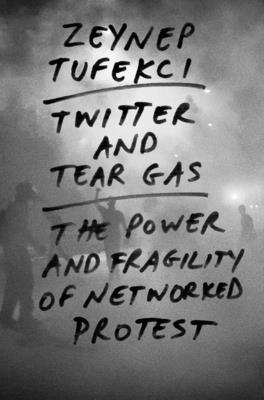Twitter and Tear Gas: The Power and Fragility of Networked Protest
Zeynep Tufekci

I really enjoyed this book. For me, as an interested non-specialist, Tufekci’s writing style strikes the perfect balance between academically precise and popularly accessible. When she coins a phrase, it is not just to put a memorable name into the reader’s head, but really to crystallize a subtle concept. (For example, “network internalities,” the way that having to work through organizational and administrative problems strengthens the capabilities of a movement.) Several of the concepts she discussed (whether she invented them or relayed them) seem like very useful analytical tools.
The book is also refreshing in a time when it seems difficult to discuss social media without either being “for” or “against” it. Tufekci writes with nuance about both what is gained and what is lost through movement organizing with social media; what’s more, it is not a simple tallying of pluses and minuses, but an analytical assessment of what particular aspects of platforms (e.g., anonymity, persistent identity) give rise to what costs and benefits. I appreciated how she treated modern social movements in comparison with older ones, particularly the American civil rights movement, rather than in an ahistorical vacuum. I also enjoyed the global perspective she brought to the discussion, focusing primarily on events in the Middle East, North Africa and Turkey, and only secondarily on U.S. social movements such as Occupy and the Tea Party.
Finally I will relay a funny anecdote. Tufekci is not an especially young woman, but she has a very youthful appearance. In the photo on the back cover flap, she not only looks young, but is also wearing a bike helmet. My immediate reaction was to think she picked a really goofy picture…but then I read the caption which said the picture showed her wearing a helmet while participating in a protest to protect her head from teargas canisters! Really changed my perception of her! Don’t judge, etc.